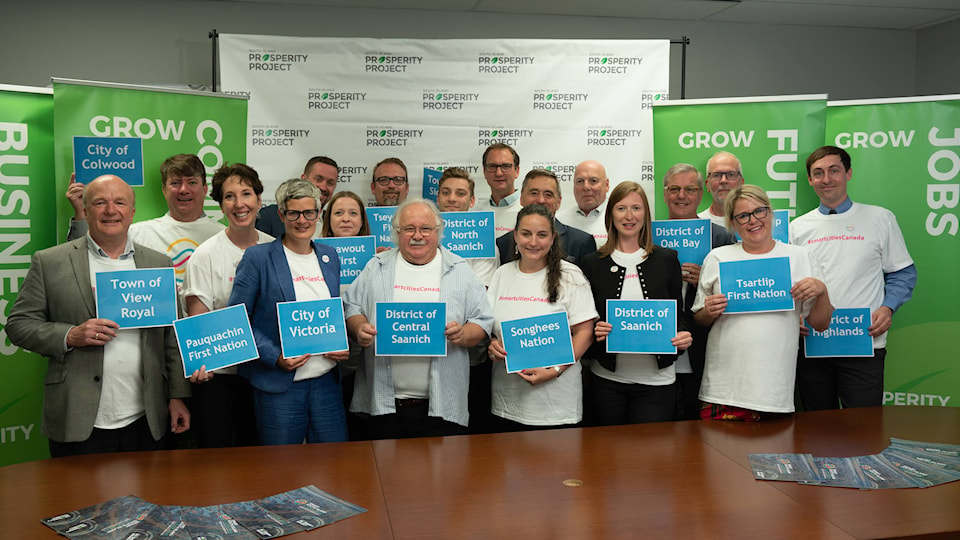The South Island Prosperity Project (SIPP), a group whose 42 members include local governments, First Nations, post secondary institutions industries and employers, got some good news Friday that has the potential to be a game changer for Greater Victoria.
Amarjeet Sohi, minister of infrastructure and communities, announced that Greater Victoria has edged out more than 126 communities across Canada to be named one of 10 finalists in Infrastructure Canada’s Smart Cities Challenge competition.
That means that the group has qualified as one of the 10 cities in the running for $10 million designed to inspire communities to build strategies and plans for improving the lives of local residents through the use of innovation, data and connected technology.
And, although the final selection of the successful communities won’t be made until early in the new year, making it to this point brings an immediate award of $250,000 to the group; funds that will be used to further refine Greater Victoria’s submission to the federal government.
“Being shortlisted for this significant opportunity to bring $10 million in funding to our region is validation of the power of public and private collaboration. Even two years ago, before achieving this level of regional collaboration, this concept wouldn’t have been possible. The possibilities now are endless,” says SIPP CEO Emilie de Rosenroll.
The Smart Cities challenge was designed to inspire communities across Canada to develop and submit their best strategies and plans for improving the lives of local residents, explained de Rosenroll.
“Our submission was based upon consultation we had with all of our partners in which we asked them what they thought were the region’s biggest priorities. We narrowed it down to five broad areas that included strengthening housing affordability, economic resilience, transportation and mobility, environmental sustainability and human health. Our proposal to the Smart Cities Challenge, though, centered on the question of transportation and how technology could be put to use to create a transportation system that allowed for interrelated and connected transportation options.”
While SIPP has been in existence for two years, the Smart Cities challenge was first announced in 2017.
SIPP submitted their proposal in April on behalf of its regional stakeholders – including 10 local governments, five First Nations, three post-secondary institutions, seven industry associations and non-profits, and 17 major employers.
Fred Haynes, who sits on the Smart South Island Steering Committee, said it is very rewarding to see the outstanding results from the seeds of regional collaboration planted just two years ago.
“Focussed on smart transportation solutions, this initiative will help Saanich and our region address a series of connected issues,” said Haynes. “These include costs of living, housing affordability, economic growth, increased commercial tax base, smarter urban design, access to local foods, and growing the supply of good paying family supporting jobs. Together these are each enabled by more convenient and smarter regional transportation options.”
SIPP also engaged feedback from over 50 active businesses, nonprofit, academic, and government participants in various committees, held dozens of information sessions, and engaged over 600 citizens in public symposiums.
B.C. Minister of Jobs, Trade and Technology Bruce Ralston congratulated SIPP on their success.
“This smart transportation proposal has the potential to improve people’s quality of life through the use of technology to create a more efficient transportation system for South Island residents,” he said.
Bruce Williams, SIPP director of engagement, said should Greater Victoria be successful in winning the $10 million award, the plan would be to leverage those funds to create a multiplier effect that could result in as much as $70 million of benefit to the region.
“The good news is that this is an 11-year program (by the federal government), and even if we’re not successful this year, we will have learned a lot by participating in this process and we could re-apply for the next year, coming from a much stronger place than where we started. We’re very optimistic about our prospects and excited about the changes we can facilitate in Greater Victoria’s future,” said de Rosenroll.
